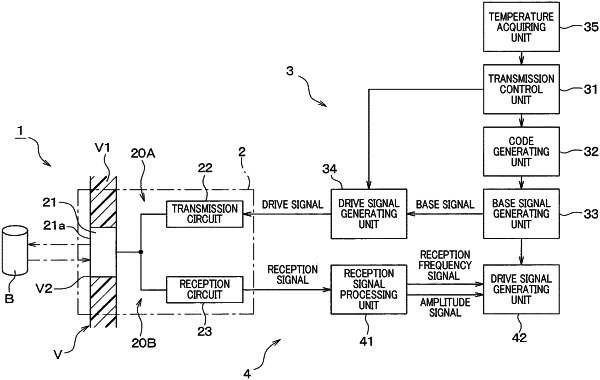| CPC G01S 7/524 (2013.01) [G01S 15/931 (2013.01)] | 12 Claims |

|
1. A drive device for driving an ultrasonic transmitter whose transmission frequencies are ultrasonic, comprising:
a drive signal generating unit configured to generate a drive signal for driving the ultrasonic transmitter, based on a base signal having a plurality of unit frequency signals arranged in a time series, each of the plurality of unit frequency signals being a frequency signal corresponding to a respective one of a plurality of codes forming a code sequence; and
a transmission control unit configured to control output of the drive signal from the drive signal generating unit to the ultrasonic transmitter,
wherein the drive signal generating unit is configured to, in response to a first unit frequency signal and a second unit frequency signal chronologically adjacent to and following the first unit frequency signal in the time series, both included in the base signal, being switched in a discontinuously switching state that is different from a continuously switching state where the first unit frequency signal and the second unit frequency signal are switched such that a target frequency for the transmission frequency changes continuously at a substantially constant rate of change from the target frequency corresponding to the first unit frequency signal to the target frequency corresponding to the second unit frequency signal, shift the frequency in at least a switching portion of the second unit frequency signal, immediately after start of the second unit frequency signal, in a same direction as a direction of frequency change from the first unit frequency signal to the second unit frequency signal.
|